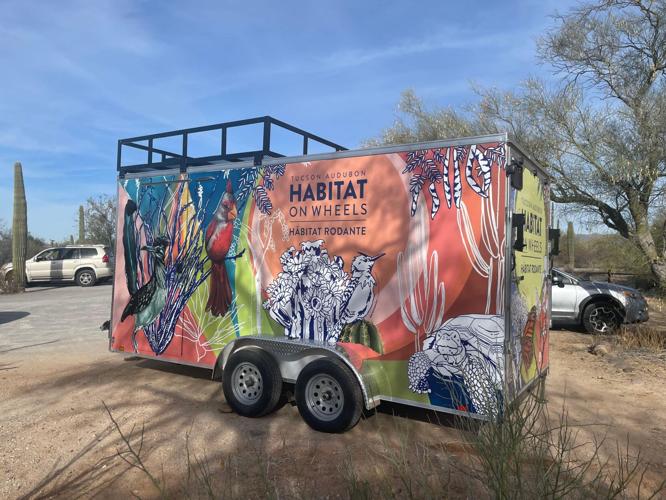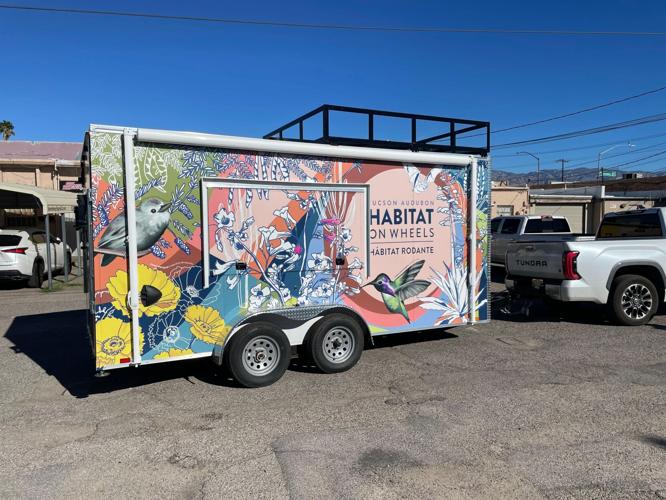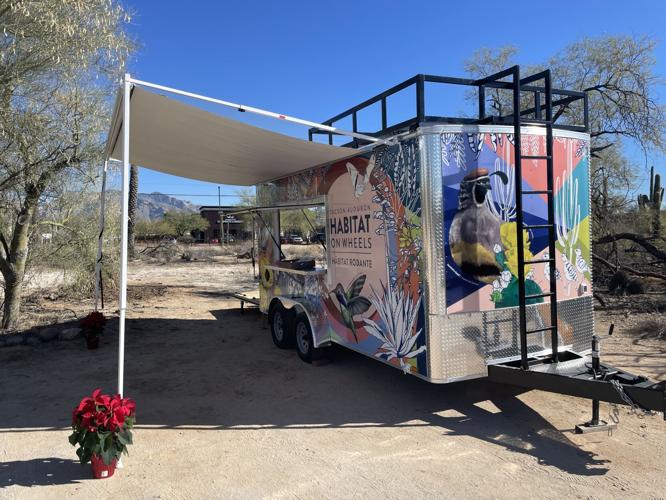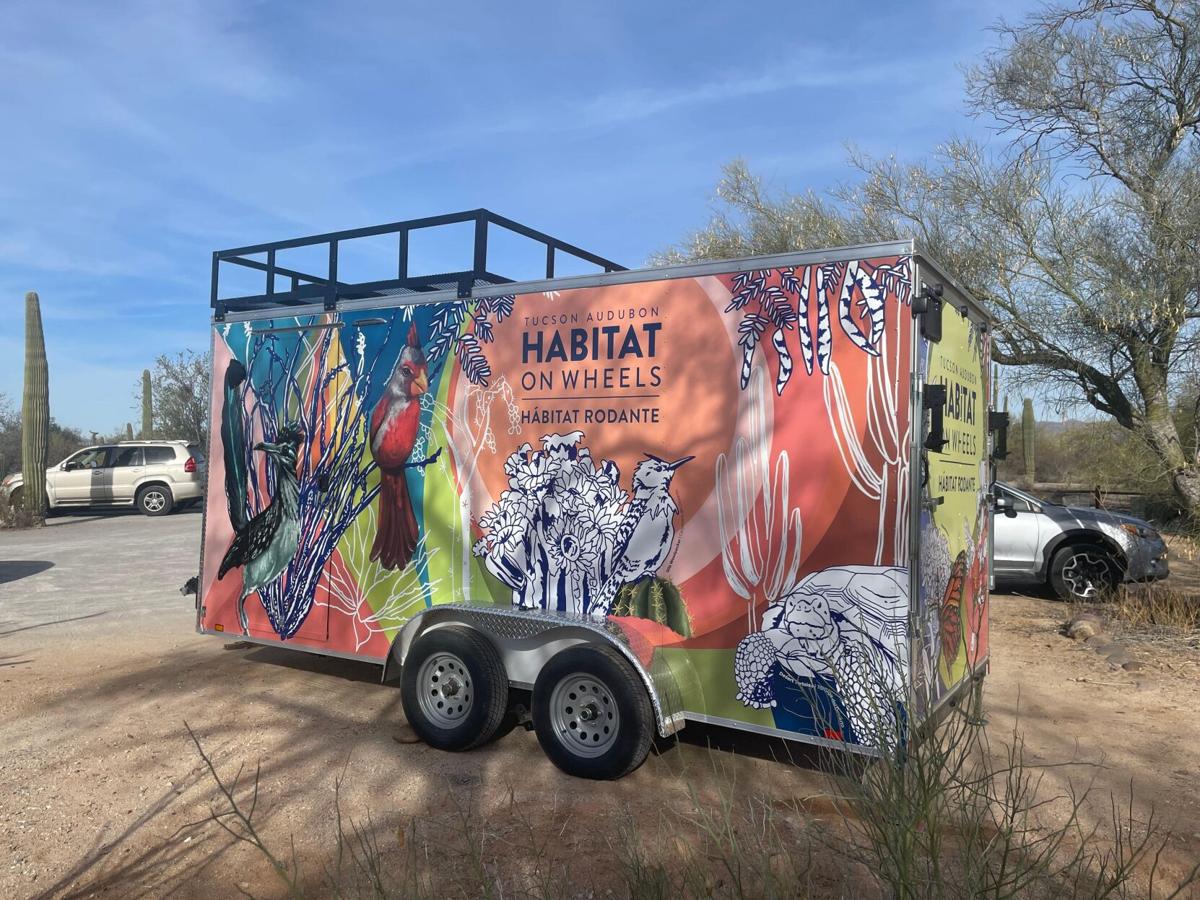A new local plant trailer is rolling through Tucson, bringing native plants and habitat-building resources to communities in need — for free.
The Habitat on Wheels program is an initiative of the Tucson Audubon Society — a local nonprofit dedicated to educating the public about bird conservation and habitat restoration.
The new program, which falls under the society’s Habitat at Home program, aspires to make native plants more accessible to the community while creating more green spaces in areas affected by urban heat throughout Tucson. According to the Environmental Protection Agency, heat islands are “urbanized areas that experience higher temperatures than outlying areas.”
“It started off with just an idea in my head of having something like a food truck,” said Kim Matsushino, manager of the Tucson Audubon Society’s Habitat at Home program. “But instead of delivering food, it would deliver native plants to people (and places) that native plants aren't accessible — so, communities that are most impacted by urban heat, which tend to be in lower-income communities.”
Other goals of the program include creating a safe urban habitat for pollinators and connecting local families to nature and birdwatching, according to Tucson Audubon Society’s website.

The Habitat on Wheels trailer at an event this past winter. The program aims to create more green spaces in Tucson while making native plants more accessible for Tucsonans.
While Matsushino came up with the idea of the native plant “food truck” a couple years ago, the trailer began rolling out in the community late last year, thanks to grant funding from the National Fish and Wildlife Foundation’s Five Star and Urban Waters Restoration Program, plus monetary support from local donors.
The program has also partnered with local groups like City of Tucson Parks and Recreation, Pima County Natural Resources, Parks, and Recreation and Pima County Public Libraries. They’re also partnering with David Garcia of Barrio Restoration, who creates colorful planters made from old tires.
“People are very excited about it,” Matsushino said. “People love the idea of it. We did an article about it in one of our weekly emails to our members and immediately, I got all these requests to pop up at their HOA events and their neighborhood plant sales. So, the response has been great.”
Due to the program’s increasing popularity, Matsushino plans to create an online form that people can fill out to request a stop from the Habitat on Wheels trailer in their neighborhood or at their local event. To see if your area is impacted by urban heat, check out this map from the City of Tucson Climate Action Hub.
The retrofitted plant trailer is hard to miss with its colorful desert-inspired wrap created by Pen Macias, also known as The Desert Pen.

A few of the plants from the Habitat on Wheels trailer. The trailer features a rotating lineup of plants native to southeast Arizona.
The inside houses what Mastushino calls “classic native plants” like globe mallows, penstemons and more. Some plants are ones that the Tucson Audubon Society propagates themselves, while others come from local nurseries depending on the season and availability.
“They're all going to be native to southeast Arizona, this region. They're going to be super hearty, low water-use and attractive. We wanted to use pretty plants (because) everyone loves a beautiful flower,” she said, adding: “Every time they go back, we want to offer something different that offers something new to that habitat for birds. So, it should be a rotating species list, ideally.”
Unlike many free resources, you don’t have to file heaps of paperwork to participate. Instead, you simply show up and pick up a free plant or two. Locals also have the opportunity to chat with members of the Tucson Audubon Society about how to take care of their newly-acquired plant(s) and get tips for creating a green space in their home, whether that’s a large house or a small apartment.
“We want to give away as many plants as possible,” Matsushino said.
Keep up with the trailer’s latest happenings, including future outings, on the Tucson Audubon Society’s event page on their website. Currently, there isn’t a set schedule for the Habitat on Wheels trailer, but Matsushino hopes to expand the overall Habitat program into even more homes, businesses, schools and community spaces.

The outside of the Habitat on Wheels trailer. The design was created by local artist and muralist Pen Macias also known as The Desert Pen.
“Having those green spaces and spaces that you can control not only will lower your temperatures for your home, but you're also going to be providing an essential and critical habitat for birds and pollinators that are continuously losing their habitats,” she said. “And it also allows people to reconnect with nature. (For example), seeing a hummingbird for the first time is just a special experience, especially for kids.
“And then once you see that hummingbird, you're like, ‘Oh, what else can I do?’ And you just kind of expand on that and then all of a sudden, you have this beautiful backyard that's bringing in all these new birds and new pollinators. So, it's just something really special that people can do. And I want people to be able to do and experience that because I think everyone needs to experience nature and just realize that we're not alone.”
For more information about the Habitat on Wheels program, check out the Tucson Audubon Society’s website.








